To help meet decarbonisation goals, organisations are increasingly looking to secure high-quality carbon credits in the nascent offsets market. They should be deliberate in their research and goals to successfully discern the integrity of offsets available for purchase, or risk accusations of greenwashing by investing in low-quality credits that do not deliver the promised benefits.
In the fast-growing carbon offset market – which increased by 4x between 2020 and 2021 - there are concerns that some organisations are using carbon credits to ‘greenwash’ their operations and that these credits may not deliver the promised carbon benefits. Given the rise of Nature-based Solutions (NbS), some of the most heavily criticised credits, organisations need to be aware of how best to navigate the market to secure the right offsets for their decarbonisation journeys.
Voluntary carbon market size by value, US$ million
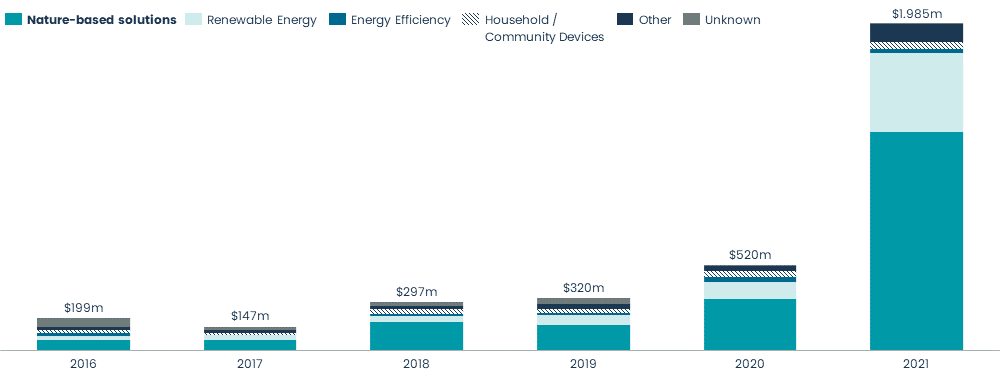
Nov 2022 – FIFA’s offsets used to claim the World Cup was ‘Carbon Neutral’ were of questionable benefit to environment due to use of renewable projects that did not require carbon financing
Aug 2022 – Companies such as JP Morgan and United Airlines have made claims of ‘net zero’ using credits of questionable quality
Jan 2023 – Revealed: more than 90% of rainforest carbon offsets by biggest certifier are worthless, analysis shows
Dec 2020 – Criticism directed against major developer of carbon credit forestry projects – The Nature Conservancy (TNC) – for creating credits that do not create claimed environmental benefits
A significant challenge facing organisations looking to lower their emissions is establishing the role carbon credits play in their energy transition strategies while balancing the risks of greenwashing and public criticism, while new regulations proposed by the US Securities Exchange Commission for the disclosure of carbon credit transactions1 adds further pressure to ensure carbon credits in their portfolios are high quality.
Jump to section
Companies are increasingly backing up their net zero targets with commitments to act, with over half of Global 500 companies setting abatement targets, up 78% since 2020 (see figure below). However, some appear to be leaning on carbon offsets to achieve their ambitions instead of reducing their own emissions.
Fortune Global 500 abatement target year commitments over time, #
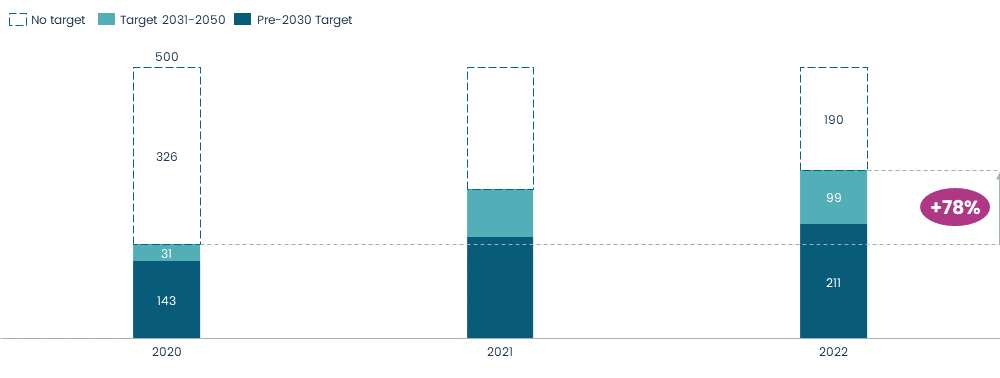
Abatement target year commitments by sector, %
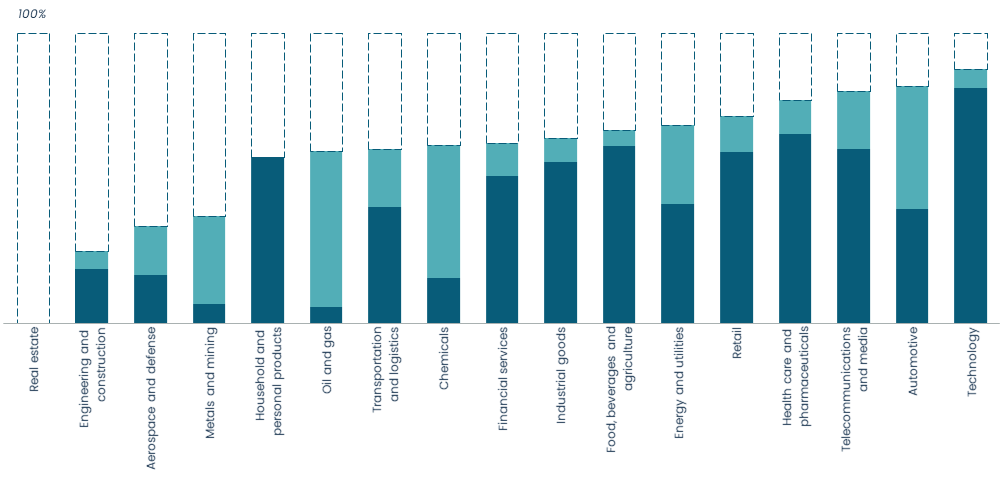
Note: Hard to decarbonise sectors prefer longer term targets (2031-2050) or are not setting targets at all.
Source: Imperial College Business School in London and Climate Impact Partners
Having clear emissions reduction targets and a detailed roadmap to deliver them is critical to quantifying potential carbon credit volume requirements, but also in communicating that credits are used only once every effort has been made to reduce emissions.

Interestingly, achieving emissions reductions is also crucial for any organisation looking to purchase high-quality offsets, as sellers of unique or high-quality carbon credits frequently perform their own due diligence on potential buyers – asking pointed questions on targets and efforts to reduce emissions – to ensure their credits were not associated with a buyer at risk of greenwashing accusations.
At a high level, there are three basic reasons companies buy carbon credits:
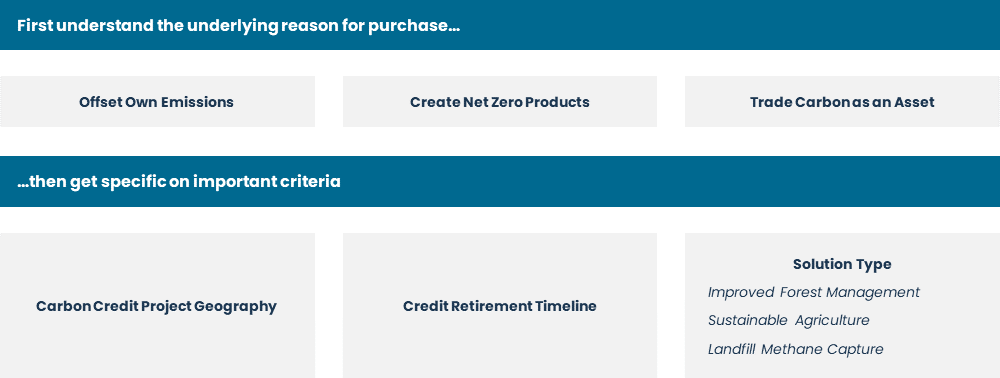
Having a detailed understanding of why an organisation is seeking carbon credits will define key criteria to help source the “best” credits to satisfy its decarbonisation commitments.
After understanding the main driver for a purchase, organisations can detail preferences for project geography, credit retirement timeline and solution type to find the most suitable credit to meet their goals.
In our experience, large organisations had better outcomes engaging with market participants when they were able to clearly state their specific objectives (e.g., interest in using carbon credits for specific regions to align with climate commitments by specific years). For example, one company faced supply chain difficulties in procuring renewable energy equipment, delaying their 2030 emission target by one to two years. With land restoration activities underway as part of various decommissioning projects, high integrity Nature-based Solutions were identified as the most suitable credits to reinforce their commitment to the ecology and communities they operated in. Armed with the knowledge of which regions they wanted to source credits from, and the rough quantity and type of credits needed, they were able to source the most suitable credits to achieve their aims.
Carbon credits come in a variety of solutions and – broadly speaking – the market places a premium on solutions that remove carbon and store it for long periods of time.
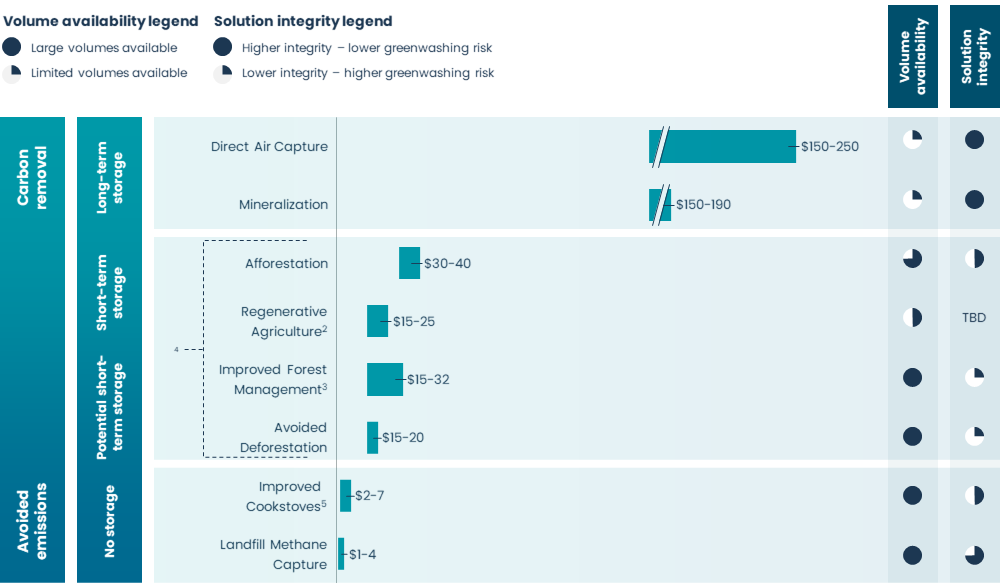
2. Sustainable Grasslands project
3. IFM pricing will be higher for credits designated as ‘removals’ vs credits designated as ‘reductions’
4. NbS prices are based on North American projects which tend to be more expensive
5. Can be considered hybrid as trees are stripped less for traditional wood gathering and thus forests are allowed to remove more carbon than they otherwise would have
Source: 3Degrees; 8 Billion Trees; Partners in Performance Market Engagement
As volume from these solutions is constrained, major buyers are turning to Nature-based Solutions due to their broad availability and stakeholder appeal. Nature-based Solutions, however, often generate pushback with concerns around their integrity including:
Even though voluntary registries like Verra or Gold Standard have extensive protocols and strict standards of verification for projects to create credits, they are not a guarantee of quality or offset outcome. Organisations should be wary of relying on ‘full service’ carbon project developers to perform their own due diligence as many have faced public criticism for pushing projects and issuing credits of suspect quality.6
One way to overcome this challenge is by creating a tailored due diligence process aligned with your organisation’s overall carbon credit strategy to source high-integrity credits that help meet your goals and mitigate the risk of greenwashing accusations.
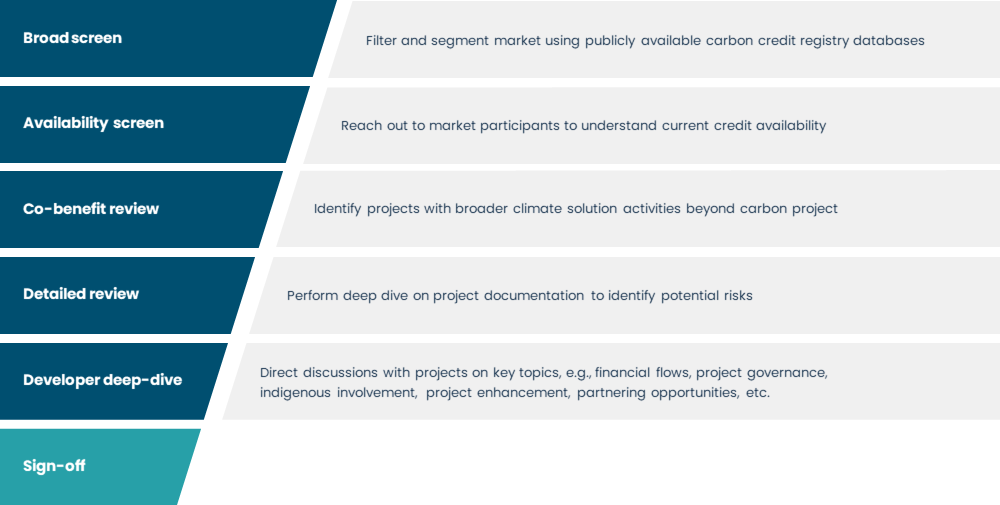
Only after understanding what is available in the market can organisations start ‘looking under the hood’ and running due diligence. This involves subjecting each potential project to progressively more in-depth analysis to see its true potential rather than relying on publicly available documentation.
The due diligence process will look different depending on the organisation and its goals. To be successful in assessing carbon offset quality and securing the right credits, there a few critical steps organisations should incorporate into their due diligence:

Purchasing at smaller volumes on the spot market is a good way to gain an initial understanding of the market while limiting risk. However, buyers purchasing large volumes on the spot market pay a premium and limit their ability to influence/control credit volume and project quality.
Organisations with a longer term and larger need for volume should consider partnerships directly with trusted/experienced project developers with a proven track record of developing relevant project types in a targeted geography. This allows buyers to source credits at costs closer to ‘wholesale’ as well as have the ability to influence how projects are designed to help them meet their goals and mitigate greenwashing risk.
In Australia, for example, the West Arnhem Land Fire Abatement (WALFA) project was established by the natural gas provider Conoco Phillips in partnership with traditional owner groups. Leveraging their knowledge of how to mitigate large late dry-season (and emissions-heavy) fires in the savannas of northern Australia, the project has produced >900,000 tonnes of abatement since it was established in 2014 and is considered a best-in-class example of partnership for carbon credit projects.7
1. US Securities and Exchange Press Release Mar 2022
6. Bloomberg critique of Blue Source
7. Carbon Market Institute
Carbon credits offer organisations ways to make positive climate impacts outside of their own emission reduction efforts. Unfortunately, the carbon market is still developing and establishing trust, so buyers concerned about the risk of greenwashing need to be more deliberate and thoughtful with their purchases.
Click to download a printable version of this article

Manager
Scott has over 10 years of experience in management consulting and investment banking operations. He is an expert in energy transition, specialising in helping clients navigate decarbonisation and understand how carbon credits fit into their journey to Net Zero.

Partner
Rob has over 25 years of global experience and a deep expertise in sustainable finance, green bonds, carbon offsets and energy transition. He has helped clients reduce emissions, achieve positive outcomes and establish a pathway to a low-carbon future.

Director
Eric has more than 25 years of experience in energy, power and other process industries. Holding extensive experience in energy transition, he is a recognised leading expert in energy innovation and sustainability.
| We actively reduce the climate impact from our operations and invest in community-based climate solutions to balance remaining carbon emissions |